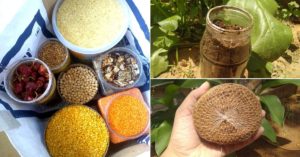6 Steps to Get the Most Nutrition Out of Your Fruits and Vegetables in Every Meal
A raw salad or smoothie might seem like the best way to load up on vitamins and antioxidants. But the nutritional value of many foods is enhanced by cooking.

So you’ve incorporated all the elements of a healthy diet into your routine. Your day begins with a green smoothie, your lunch plate includes every colour of the rainbow, and you get the recommended 3 cupfuls of fruit and vegetables every day. Does this mean that you’re getting the best nutrition from the food you eat? Unfortunately, no.
Healthy eating goes beyond just selecting the right produce. The way we store, prepare, cook and pair our food also influences the amount of nutrition our bodies derive from it. Every food is a complex and unique combination of nutrients that become available to our bodies under different circumstances. Some ingredients are healthiest when eaten raw while others are best cooked. Some foods need to be paired with fats in order to unlock their nutritive value, while combining some foods with citrus makes them most healthy.
Here are 6 ways to get the most nutrition from your food.
Raw is not always healthy
A raw salad or smoothie might seem like the best way to load up on vitamins and antioxidants. But the nutritional value of many foods is enhanced by cooking. This is because heat breaks down a vegetable’s cell walls and releases the nutrients that are bound to them. A great example is tomatoes which contain an antioxidant – lycopene. Lycopene is beneficial for lowering the risks of cancer and heart disease. Carrots, spinach, mushrooms, cabbage and capsicum also supply more antioxidants, such as carotenoids and ferulic acid, to the body when cooked. In some cases, the process of cooking certain vegetables, such as cauliflower and cabbage, produces valuable nutrients. An example of this is indole, a compound that destroys precancerous cells before they turn malignant. Cooking carrots also releases more beta-carotene than eating raw carrots.
But some foods are best eaten raw
Heat breaks down water-soluble vitamins like B1, B5, C and folate. To get more of these nutrients, eat raw all the foods that are rich in these nutrients.
Foods like the ones below are best eaten raw to improve the body’s absorption of their nutrients:
- flax seeds, sunflower seeds and sesame seeds (rich in vitamin B1)
- avocados, broccoli and peanuts (rich in B5)
- spinach, leafy greens (rich in folate)
- citrus fruits, amla, capsicum (rich in vitamic C)
Cook it right
The way a vegetable is cooked greatly determines how nutritious it is. It is well known that boiling reduces the nutritive value of vegetables. It causes nutrients to leach out into the water. Unless the boiling liquid is retained and consumed as soup or repurposed as stock, these nutrients are wasted. Stir frying and steaming help to preserve nutrients, especially antioxidants and the water-soluble ones listed above. However, in both these methods, the duration of cooking determines the nutrition quality, and steaming or stir-frying for too long can cause nutrition loss.
Get chopping
Whether you chop, grate or pound, the way you prep your food plays a big role in the quality of nutrition you get from it. Chopping and crushing breaks the cell walls of fruits and veggies, unlocks the vitamins and minerals stored in them, making them easily available to the body for digestion. Cutting and grating helps release a class of beneficial chemicals called polyphenols. Foods such as carrots, zucchini, radish, cabbage and sweet potatoes are rich sources of polyphenols. Chopping also releases enzymes that aid the digestive process.
It is important to remember that vegetables and fruits must be consumed as soon as they are cut. The longer chopped vegetables and fruit are left uneaten, the less nutritious they become. Certain foods like apples, potatoes and avocados, when chopped, go brown when exposed to oxygen – a process called enzymatic browning which reduces their vitamin C content.
Pair foods well
Most traditional cuisine was designed to improve digestion and maximise the nutrient absorption from ingredients. Meals were often arranged in courses featuring different food pairings, all focused on making each meal as nutritious as possible. Combining some foods enhances their nutritional value, and helps the body absorb and utilise all of their benefits better. Some healthy food pairings include:
- combining foods rich in fat soluble vitamins A, D, E and K with fatty foods: Leafy green vegetables, mushrooms, carrots, pumpkins, sweet potato, and broccoli are most nutritious when cooked or dressed with healthy fats such as mustard oil, coconut oil or ghee. The fats enable better nutrient absorption and assimilation especially when combined with raw vegetables, as in the case of salad dressings.
- iron-rich foods must always be paired with foods rich in vitamin C which can increase the absorption of iron from plants.
- iron and zinc-rich foods such as peas, spinach, broccoli, okra, and sweet corn are best eaten along with foods that are rich in sulphur such as garlic, onions, legumes, nuts and seeds.
Store fruits and vegetables correctly
To prevent nutrition loss during storage, it’s important to shield fruits and vegetables from excess heat, light and oxygen which can hasten degradation and decay. Keep all vegetables, expect root veggies in the fridge. Store whole fruit at room temperature. For cut fruit and veggies, add a squeeze of lemon juice and store them in the fridge to preserve their nutrients.
Complement your healthy diet with safe, non-toxic cleaners from The Better Home. Subscribe today and get up to 35% off on your first monthly kit.![]()
This story made me
- 97
- 121
- 89
- 167
Tell Us More
We bring stories straight from the heart of India, to inspire millions and create a wave of impact. Our positive movement is growing bigger everyday, and we would love for you to join it.
Please contribute whatever you can, every little penny helps our team in bringing you more stories that support dreams and spread hope.



















